Elimination Method
In the elimination method, you either add or subtract the equations to get an equation in one variable.
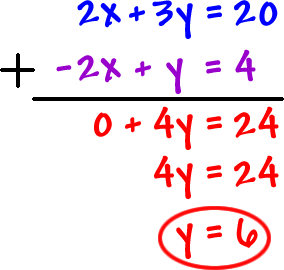
When the coefficients of one variable are opposites you add the equations to eliminate a variable and when the coefficients of one variable are equal you subtract the equations to eliminate a variable.
Consider the following pair of linear equations:

The coefficients of x in the two equations are 2 and 3 respectively. Let us multiply the first equation by 3 and the second equation by 2, so that the coefficients of x in the two equations become equal:
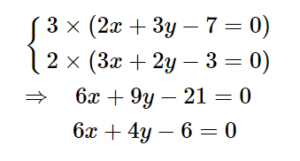
Now, let us subtract the two equations, which means that we subtract the left hand sides of the two equations, and the right hand side of the two equations, and the equality will still be preserved (this should be obvious: if I = II and III = IV, then I – III will be equal to II – IV):
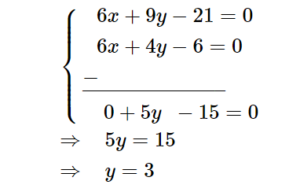
Note how x gets eliminated, and we are left with an equation in y alone. Once we have the value of y, we proceed as earlier – we plug this into any of the two equations. Let us put this into the first equation:

Thus, the solution is:
![]()
Example

We can eliminate the x-variable by the addition of the two equations.

The value of y can now be substituted into either of the original equations to find the value of x

The solution of the linear system is (0,2).
To avoid errors make sure that all like terms and equal signs are in the same columns before beginning the elimination.
If you don’t have equations where you can eliminate a variable by addition or subtraction you directly you can begin by multiplying one or both of the equations with a constant to obtain an equivalent linear system where you can eliminate one of the variables by addition or subtraction.

Begin by multiplying the first equation by -4 so that the coefficients of y are opposites
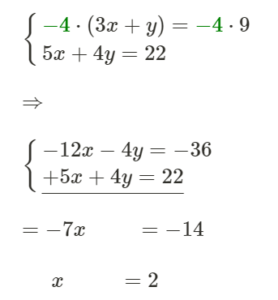
Substitute x in either of the original equations to get the value of y
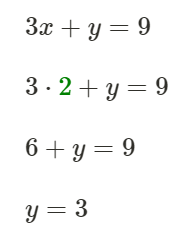
The solution of the linear system is (2. 3)